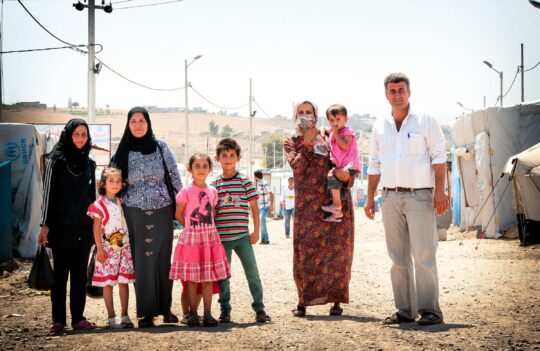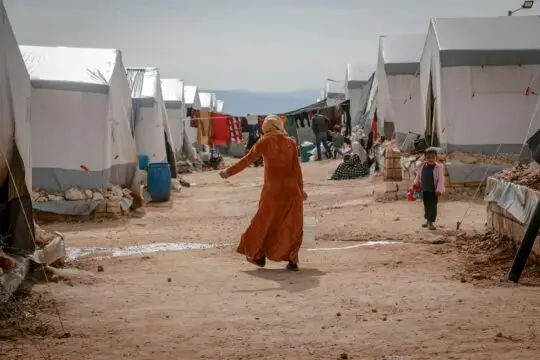EU asylum reform allows temporary halt to admissions
As things currently stand, the German government can apply for no further asylum seekers from other EU countries to be accepted until the end of 2026. This is the result of an analysis by the EU Commissioner for Home Affairs, Magnus Brunner, which has been made available to the German Press Agency (dpa ).
The legal basis is the new solidarity mechanism of the EU asylum reform (CEAS). It applies to member states that have already taken in many asylum seekers. Countries with high migratory pressure can be temporarily exempted from the obligation to take in additional asylum seekers.
According to the analysis, Germany can refer to the high number of asylum seekers already in the country - including many for whom other countries would actually be responsible under EU rules (Dublin Regulation).
The possibility of an exception is closely linked to the reform of the European asylum system. It is due to come into force from summer 2026 and will bring many new rules for asylum seekers in Germany and the EU.
What will the CEAS reform change for refugees from 2026?
The EU asylum reform - officially the Common European Asylum System (CEAS) - is intended to createuniform asylum rules for all member states. It is considered to be the biggest reform of European asylum policy in twenty years.
The aim of the reform is to speed up asylum procedures, distribute responsibility more evenly between the member states and curb so-called secondary migration - i.e. onward journeys within the EU.
The most important changes from 2026 at a glance:
Registration and security checks at the EU's external borders
In future, all asylum seekers are to be registered on arrival at the EU's external borders. Fingerprints, biometric data and security checks will be carried out there. This data will flow into a common EU database that all member states will use.
Faster asylum procedures
Anyone coming from a country with a low probability of protection (e.g. less than 20% recognition rate in the EU) should in future undergo an accelerated border procedure.
This procedure may take a maximum of 12 weeks and is carried out before entry into the EU. If the asylum application is rejected, the person is returned to their country of origin or - if this is not possible - to a safe third country.
What is new is that asylum seekers may also be deported to safe third countries to which they previously had no direct connection.
Faster returns in the event of rejection
A central point of the reform is the strengthening of the return policy. The EU wants to ensure that people whose asylum applications have been rejected are returned more quickly - if necessary with the support of the newly created EU asylum agency or the European border protection agency Frontex.
So-called "return hubs" outside the EU are also being discussed. People seeking protection whose asylum application has been rejected are to be housed in these return centers until it is possible to return to their country of origin or to a safe third country.
Solidarity mechanism
All EU member states will have to make a solidarity contribution in future. This can be done in three ways:
- by accepting asylum seekers from heavily burdened countries
- through financial contributions
- through technical support, e.g. personnel for registration or deportation
Each year, the EU Commission determines the total number of people to be redistributed or supported by other measures. Member states can be temporarily exempted from these obligations under certain conditions - as is now the case in Germany.
When must Germany take in asylum seekers?
In principle, Germany and the EU are obliged under international law, European law and national law to grant asylum or protection to people seeking protection under certain conditions. This obligation arises from several legal sources:
- Geneva Convention Relating to the Status of Refugees (1951): Protection in the event of persecution on grounds of origin, religion, political opinion or membership of a social group.
- European Convention on Human Rights (Art. 3 ECHR): Prohibition of deportations if there is a threat of torture, inhumane treatment or danger to life.
- EU Charter of Fundamental Rights (Art. 18): Right to asylum in accordance with the CFR.
- German Basic Law (Art. 16a) and Asylum Act (AsylG): Right to a fair asylum procedure.
This means that anyone applying for asylum at the German border has the fundamental right to a fair trial. The authorities must always check on a case-by-case basis whether there are grounds for protection.
When may Germany reject an asylum application?
The Dublin III Regulation currently stipulates that the EU country in which a person first set foot on European soil or was registered there is responsible for the asylum procedure. Germany may reject asylum seekers and return them to other EU states if they were first registered there and conditions are not inhumane.
The new CEAS reform will partially change this system. In future, the solidarity mechanism will oblige all EU states to participate equally in asylum procedures - through reception, financial contributions or technical assistance. In addition, returns to the EU states in which an asylum seeker was first registered are to be implemented even more strictly.
Conclusion: What does the possible asylum ban mean - and what does it not mean?
First things first: a temporary halt to admissions would not mean that Germany would no longer accept asylum seekers from 2026. People who apply for asylum at the German border or are already in the country retain the right to a fair procedure with individual examination.
The new EU regulation does not change anything for people who are already living in Germany or whose asylum procedure is ongoing here. All current and new asylum applications will continue to be processed in accordance with German law.
The possible exception relates exclusively to the redistribution of people seeking protection within the EU - i.e. people who have already been registered in another EU country and are to be distributed to other member states as part of the new solidarity system.
Germany could apply for a limited period of time not to accept any more people from this EU distribution system. However, it is not currently known whether the German government will make this request.
In short:
- Germany must continue to carry out its own asylum procedures - no one should be turned away at the border across the board.
- The freeze on admissions would only apply to the redistribution of asylum seekers from other EU states, not to people seeking protection directly in Germany.
- Asylum seekers who are already in Germany are not affected by the regulation.












